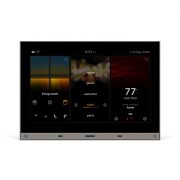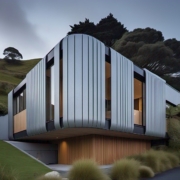What is Automation?
Home automation, integrated building technology and smart homes
Home automation, integrated building technology or smart homes are umbrella terms for residential or commercial premises that mean different things depending on your budget, but loosely describe a combination of multi-room audio and visual, lighting control via a touch screen (or mobile device), structured cabling for phone and computer network flexibility, security (including alarms and cameras) and access control for remote vehicle and pedestrian gate release or proximity readers, and whole building control in commercial premises.
In a non-automated home you might use your remote to open the garage door, another remote to unset the alarm then find yourself feeling around for the light switches in the garage then hall, then again in the kitchen and lounge. Now, because the lights are on you must close the blinds. Turn the heating on, drop your bags and settle down on the couch to watch the News. Realise you don’t have the remote for the TV so find that, and then adjust the lighting level for watching TV.
An automated, or smart home does all this for you. Home automation allows one button press to simply unset the alarm, illuminate a path of light to the kitchen and turn the TV onto your favourite channel. The beauty being that these scenarios are customisable to your family’s lifestyle.
And similar scenarios exist within commercial premises. Where you might have had a building administrator booking rooms, setting up AV equipment and allocating resources this can now all be managed by a central automated building control system. These clever systems not only go into presentation mode in preparation for room occupancy, but for any reason the meeting doesn’t go ahead, they will sense that no one is in the room and shut off the systems again conserving power. And that’s only the tip of the iceberg when it comes to making your commercial space work for you.
Brendon Reid, Director of Automation Associates comments “It’s said that 70 per cent of the energy used in the US goes into buildings and 50 per cent of that is wasted. Good automation systems should not only be reliable and simple to use, but should also give you good control over your energy management thereby creating savings.”
For the technically wary these systems can seem daunting, however industry association CEDIA (the Custom Electronic Design & Installation Association) can be a good place to start. This international trade association was set up to promote high standards within the custom electronics industry by providing training, accreditation and recognition for members. By engaging a CEDIA Certified professional you will have peace of mind and the finest in custom home automation electronic design and installation.
Home automation systems can be stand alone or fully integrated whereby you can control lighting, audio, heating, access, theatre and more in one tidy, simple user interface. The beauty is that a good custom design and installation company is able to fully customise your system to your budget, needs and lifestyle.
Words by Automation Associates. Visit www.aa.net.nz or email sales@aa.net.nz for more information. Ph 0508 AUTOMATE











